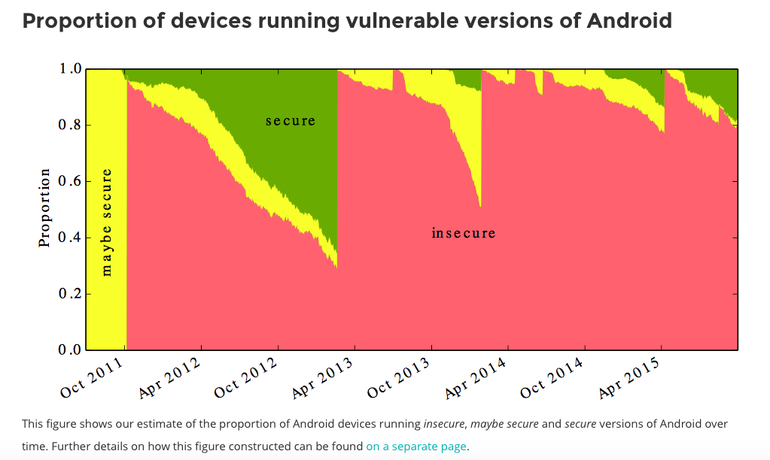The lack of fast updates across the Android ecosystem means that more than 80 percent of device owners are at risk to at least one critical vulnerability. That’s according to a study from the University of Cambridge, which was partially funded by Google.
The study shows that while Google can make the latest version of Android safe from all vulnerabilities, its inability to get the updates out to every Android phone in a timely fashion makes most of the ecosystem unsafe. Even being one or two patches behind could put smartphone owners at risk of vulnerabilities like Stagefright, which is capable of taking over devices and infecting them with malware.

In the study, each mobile vendor was graded based on security with scores from 1 to 10. Nexus devices ranked the highest at 5.2, followed by LG at 4.0, and Motorola at 3.1. Samsung came in fourth at 2.1, followed by Sony, and finally, HTC.
Samsung and LG both confirmed plans to stick on course with Google’s monthly updates, but HTC claimed that goal was unrealistic due to carrier testing. AT&T and Verizon Wireless have both been accused of routinely pausing updates, and blocking certain features like Google Wallet on Android devices.
Having a phone that’s vulnerable to attack might sound terrifying, but most critical vulnerabilities can only be exploited if the user downloads or clicks on something that is laced with malware. That’s why malware attacks tend to only reach a few hundred or thousand devices. Of course, some serious bugs like Heartbleed and Stagefright do pose risks to more devices.
Naturally, Android device owners would much rather have a system that is 100-percent safe. Google is working with device partners and carriers to ensure updates, especially security patches, are delivered at a speedy rate. Things just don’t always go as planned.
Android’s rival iOS isn’t completely off the hook when it comes to vulnerabilities, either. The most recent panic in China happened only a week ago, when an old video player returned and took over iPhones. A week before that, Chinese developers Baidu and Tencent were both caught using a faulty version of Xcode, infecting iPhone owners in China with malware.
However, the main difference is that Apple can immediately shore up the vulnerability on every iPhone that supports the latest version of iOS (which is the vast majority of iPhones) with a software update. Google isn’t able to do that because it’s phones are made by third-party manufacturers, whose own User Interfaces often slow down the update process, and the carriers who support these phones dictate when updates pass to individual phones.


